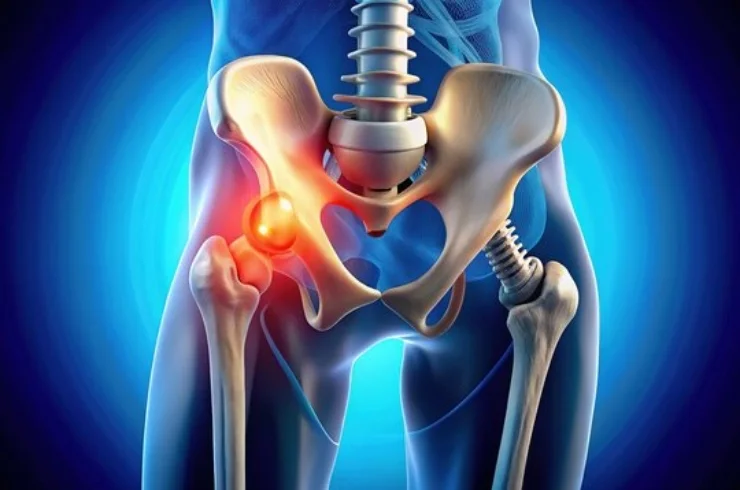Hip Replacement

Hip Replacement: Restoring Mobility and Relieving Pain
Overview
Hip replacement surgery, also known as hip arthroplasty, is a highly effective procedure for relieving pain and improving mobility in individuals with hip joint arthritis or other hip joint disorders. The surgery involves removing the damaged or arthritic hip joint and replacing it with an artificial implant, which can be made of metal, plastic, or ceramic components. Hip replacement surgery is commonly performed in individuals suffering from chronic hip pain due to osteoarthritis, rheumatoid arthritis, or hip fractures that are not amenable to conservative treatments.
Indications for Hip Replacement
The most common reasons for hip replacement include:
Osteoarthritis: The most frequent cause of hip replacement, where the cartilage in the hip joint wears down, leading to pain, stiffness, and limited movement.
Rheumatoid Arthritis: An autoimmune condition causing joint inflammation, which can damage the cartilage and bones in the hip joint.
Hip Fractures: Severe fractures, particularly in elderly individuals, may require hip replacement if the fracture cannot be repaired or if there is significant bone loss.
Avascular Necrosis: When the blood supply to the hip joint is disrupted, leading to bone death, it may require hip replacement to restore function.
Congenital Hip Disorders: Some individuals are born with hip abnormalities that may eventually require hip replacement.
Procedure
Hip replacement surgery is typically performed under general or regional anesthesia. The procedure involves two main steps:
Removal of Damaged Bone and Cartilage: The surgeon makes an incision over the hip and removes the damaged ball (femoral head) of the thigh bone and the worn-out cartilage from the acetabulum (hip socket).
Insertion of the Prosthetic Implant: The surgeon then inserts a metal or ceramic ball into the femoral stem, which is inserted into the thigh bone. A cup-like component is placed into the hip socket to create a new, functional joint. The implant is designed to mimic the natural motion of the hip joint, providing stability and reducing pain.
There are different approaches to hip replacement, including the posterior, anterior, and lateral approaches. The choice of approach depends on the surgeon’s preference, the patient’s anatomy, and any pre-existing conditions.
Recovery and Rehabilitation
After surgery, patients typically stay in the hospital for 1-3 days. Early mobilization is essential, and physical therapy is started soon after surgery to strengthen the muscles around the hip and improve range of motion. Patients may need to use assistive devices, such as a walker or crutches, for several weeks to avoid putting too much weight on the newly replaced hip.
Full recovery from hip replacement typically takes 6-12 weeks, though it may take longer for complete healing and strength restoration. During recovery, it’s important to avoid certain movements, such as crossing the legs or bending too deeply, to ensure proper healing. Physical therapy plays a key role in rehabilitation, helping patients regain strength, flexibility, and the ability to perform daily activities.
Benefits of Hip Replacement
- Pain Relief: The primary benefit of hip replacement is significant reduction or complete elimination of pain that was previously caused by joint degeneration.
- Improved Mobility and Function: With the new joint, patients can regain greater mobility and the ability to perform daily activities, such as walking, climbing stairs, and driving.
- Increased Quality of Life: Hip replacement allows many individuals to return to hobbies and activities they may have had to give up due to pain and stiffness.
Risks and Complications
While hip replacement is generally a safe and effective procedure, it does carry some risks, including infection, blood clots, implant dislocation, implant wear or loosening over time, and nerve or blood vessel damage. However, these complications are rare, and advancements in surgical techniques and prosthetic materials have made hip replacement surgeries increasingly successful.
Conclusion
Hip replacement surgery is a life-changing procedure for individuals with chronic hip pain or joint damage. By restoring joint function and eliminating pain, hip replacement allows patients to regain mobility, improve their quality of life, and return to everyday activities. With advancements in surgical techniques, recovery protocols, and implant technology, hip replacement has become a highly successful option for restoring function and alleviating pain in the hip joint.
